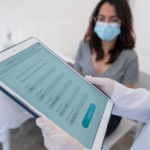Over the phone interpretation, OPI, phone interpretation whatever name you prefer, the ability to pick up the phone and connect to a professional interpreter has become a staple for healthcare professionals treating limited-English proficient (LEP) patients.
Shifting US demographics and legislation like Section 1557 of the Affordable Care Act make interpreters essential for practicing medicine, and phone interpretation can serve as a practical supplement to a healthcare organization’s own staff interpreters. The service also enables smaller organizations to treat LEP patients without the size, budget, or bandwidth needed to hire their own linguists.
Like any tool, over the phone interpretation for healthcare works best when its end users doctors, nurses, administrators, etc. use it effectively. Many hospitals and healthcare organizations have incorporated How to work with an interpreter training into their new-hire and annual staff curriculum for this reason. Here are a few best practices for healthcare professionals looking to get the most out of their phone interpretation solution:
1. Give the interpreter time to greet you and provide their Interpreter ID number, and note it for the file. The healthcare setting is a busy one, and it’s easy to jump right into conversation and miss the Interpreter’s ID. But this documentation becomes crucial if the patient file is requested for a Joint Commission Survey or reviewed for Section 1557 compliance.
At CyraCom, our interpreters are trained to restate their Interpreter ID number at the end of the call in case it was missed the first time.
2. Briefly explain the nature of the encounter to the interpreter. This helps the interpreter understand the context for the conversation they re about to relay. It also enables them to assume an appropriate tone, handling a cancer diagnosis differently than they would a routine check-up.
For example: Hi interpreter. We’re going to be providing Mrs. Lin with her post-discharge instructions before she leaves the hospital.
CyraCom interpreters receive training in medical terminology, so they should be well-equipped to relay your message to the patient.
3. Pause to allow time for the interpreter/patient introduction. Patients who don’t speak English can sometimes feel disconnected. Allowing the interpreter time to introduce themselves to the patient in-language may ease discomfort and improve patient satisfaction.
CyraCom interpreters know to give their name and explain their role: I am a professional interpreter and will interpret everything you say.
4. Focus on the patient, speaking directly to them and maintaining eye contact. Providers without much experience using phone interpretation may be inclined to talk to the interpreter: Please tell Mr. Hernandez that But this complicates the conversation any may leave the patient feeling left out.
Instead, speak to the patient as you would without an interpreter: Mr. Hernandez, we have your test results and
5. Speak in short, complete sentences and leave space for the interpreter. Phone interpreters typically take notes to help them remember everything you re saying to the patient. But speaking full paragraphs without pausing to allow the interpreter to relay your message will be challenging for them and may confuse the patient. Speaking a sentence I d like to explain your diagnosis to you now. then pausing for the interpreter will help the conversation flow more naturally.
CyraCom interpreters take notes using a whiteboard system and receive regular monitoring and supervision, ensuring no patient information is retained after the call.
6. Omit slang, jargon, and metaphors from the conversation. These don’t typically translate well between cultures word-for-word, and the patient s language may not have an expression with a similar meaning. Instead, speak in straightforward, literal sentences these are much easier to interpret successfully.
7. Allow the interpreter to clarify any issues or confusion. Interpreting a message across languages sometimes results in patient confusion. The interpreter, who has the advantage of speaking the patient’s language, may pick up on this before the provider does. If this happens, the interpreter will let you know and seek to clarify the issue with the patient in-language. It’s a normal part of the interpretation process, and it benefits everyone involved by resolving misunderstandings.
Would you like to learn more about improving patient access by partnering with CyraCom for over the phone interpretation (as well as video interpretation, translation/localization, or on-site interpreting? Check out an overview of our services here.
Want to know how a quality language services partner can help improve the metrics your leadership cares about? Download our whitepaper:









